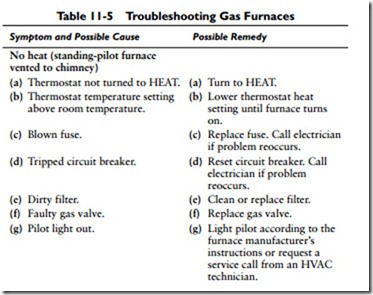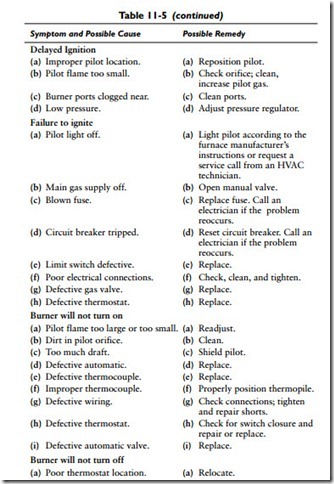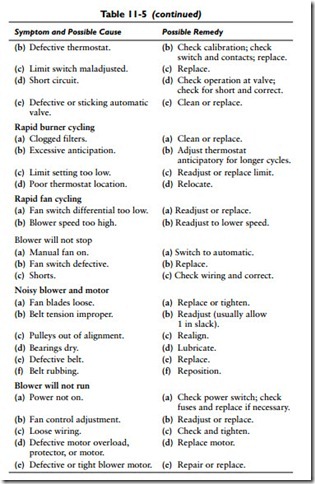Troubleshooting a Gas Furnace
Table 11-5 contains the most common operating problems associated with residential and small commercial gas furnaces. Each problem is given in the form of a symptom, the possible cause, and a suggested remedy. The table is intended to provide the operator with a quick reference to the cause and correction of a specific problem.
Some Preliminary Troubleshooting Tips:
• Check the thermostat to make sure it is set higher than the actual room temperature. If you have a programmable thermostat, make sure it has fresh batteries.
• Make sure the selector switch is on heat if the system is equipped with central air or if the system is zoned.
• Check the emergency switch (usually a red switch plate at the top of the cellar stairs or on the side of the furnace) to see that it is on.
• If you are familiar with the fuse or circuit breaker panel, see whether the fuse is burned or the breaker tripped. Correct the problem at once. If it repeats, call a serviceman.
• On standing-pilot furnaces, the burner will not light if the pilot has gone out. If you are not familiar with the function of the gas valve or lighting the pilot, call for service.
• Do not disconnect any piping to check for gas supply. An instrument is used to check for pressure. This should be done by a qualified serviceman.
• If the furnace is vented through PVC (white plastic pipe) out the side of the building, examine the ends of the pipe or pipes outside. Blockage of any kind will cause a shutdown. Many high-efficiency, condensing furnaces vented through PVC pipe are self-diagnostic. These furnaces have a steady burning red light. If the light starts blinking, the furnace is indicating there is a problem that requires attention.




